Key Takeaways
- Feng Shui combines flow, placement, and color to create balanced spaces.
- Color choices can shift how a room looks. Light tones often expand spaces, while darker ones add cozy warmth.
- Practical tips include checking available light, deciding on accent pieces, and pairing colors that harmonize with your furniture.
- Focus on harmony rather than strict rules. Feng Shui thrives on balance and common sense.
- Experiment with texture, contrast, and room function when choosing your palette.
Introduction
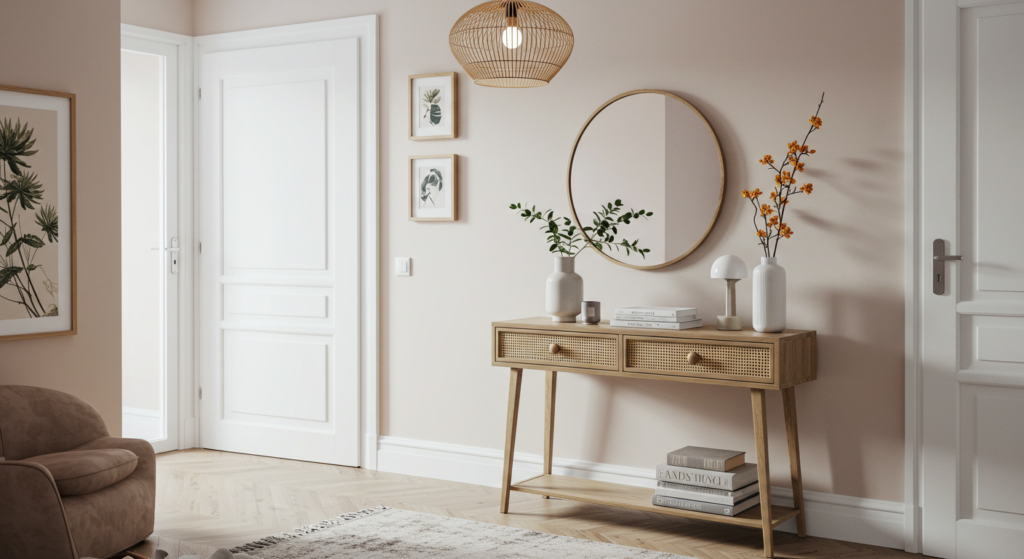
Have you looked at a room and wondered why something felt off? Many times, it’s about color placement, furniture arrangement, or how different shades interact with each other.
Feng Shui provides a framework to arrange our interiors in a way that promotes a balanced, comfortable flow. This Chinese-inspired approach isn’t only about rules or mysticism. It often revolves around simple ideas: clear pathways, harmonious design, and thoughtful color usage.
When you choose a color scheme, you’re shaping how a space feels to anyone entering it. Light shades may make a small bedroom seem bigger.
Deep, bold shades can add a sense of calm to a busy kitchen. By weaving Feng Shui ideas with basic design sense, you can create an atmosphere that feels welcoming, practical, and visually appealing.
We will explore 14 sections, each divided into three subsections. Each section provides hands-on advice, from picking complementary shades to incorporating subtle accents.
You’ll discover color choices for different rooms, how to anchor a space with accent walls, and ways to blend Feng Shui concepts into your everyday home style. If you’re interested in giving your interiors a deeper sense of harmony, read on.
Selecting Colors for Balanced Energy

Matching Color to Home Function
What role does your space play? A home office might benefit from crisp, clean walls that make tasks easier. A living room may embrace a friendly vibe through inviting warm tones. When you analyze each room, look for areas where you can add a dash of color.
Perhaps a hallway needs a bright runner or a small accent wall. Function guides everything. If a kitchen is small, try a neutral backdrop with a fresh pastel highlight. That choice can add clarity, making the environment feel more organized.
Subtle Contrasts That Flow
Sometimes you want two colors that align but still offer gentle contrast. Think white and light gray, or cream and beige. You create a visual path that the eyes can follow without jolting them. This approach helps avoid flat-looking spaces while ensuring each area transitions naturally into the next. Look at each wall, piece of furniture, or accent piece. Then, ask whether they collectively guide the eye or pull it apart.
Anchoring with Neutrals
Neutrals can set a relaxed foundation. Soft creams, warm grays, and muted browns blend in multiple ways. If you prefer vibrant color in smaller doses, a neutral background is an excellent starting point.
Neutral walls can carry bolder accents, like an orange throw pillow or a teal vase. A neutral anchor helps you swap out accent colors later without big repainting tasks. This keeps your rooms fresh and flexible for future updates.
Feng Shui Basics: Doors, Windows, and Light
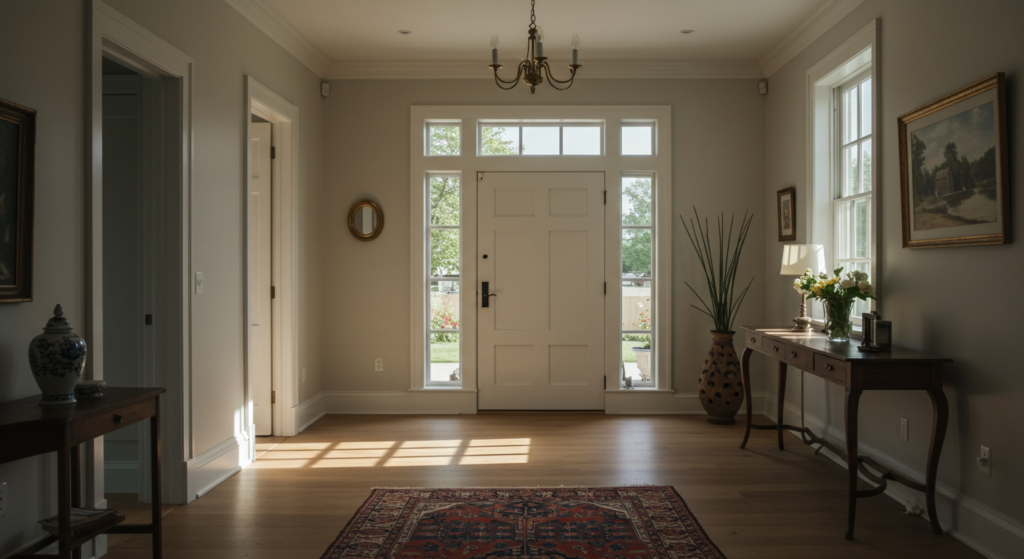
Creating a Clear Path
Feng Shui teaches that entrances and exits form energy pathways. A cramped entryway might bottleneck the flow. If you paint the door a color too dark for the hallway, it can feel smaller. Instead, consider a lighter tone for the door and nearby walls. This invites more openness. If the door is already a bold shade, keep the surrounding walls soft, letting the door stand out as a friendly focal point.
Window Placement and Reflection
Windows let in natural light and offer an escape for stale energy. If your windows are large, use curtains that enhance the outside scenery. Sheer fabrics can let more light filter in, brightening your interior colors.
For smaller windows, a strategic color around the frame, like a slight off-white, might create an optical illusion of added width. This trick draws attention to the window and suggests more space than you actually have.
Balancing Natural Light
Direct sunlight can alter the appearance of paint. A color that looks soft beige in the morning may appear golden by noon. For rooms with too much sunlight, cooler tints or thick curtains might help moderate brightness.
For dim corners, bright paint or reflective surfaces can bounce light around. Consider placing a large mirror opposite the window. This can recast daylight through the room, showing off your chosen palette more evenly.
Using the Five Elements Without Over-Explaining
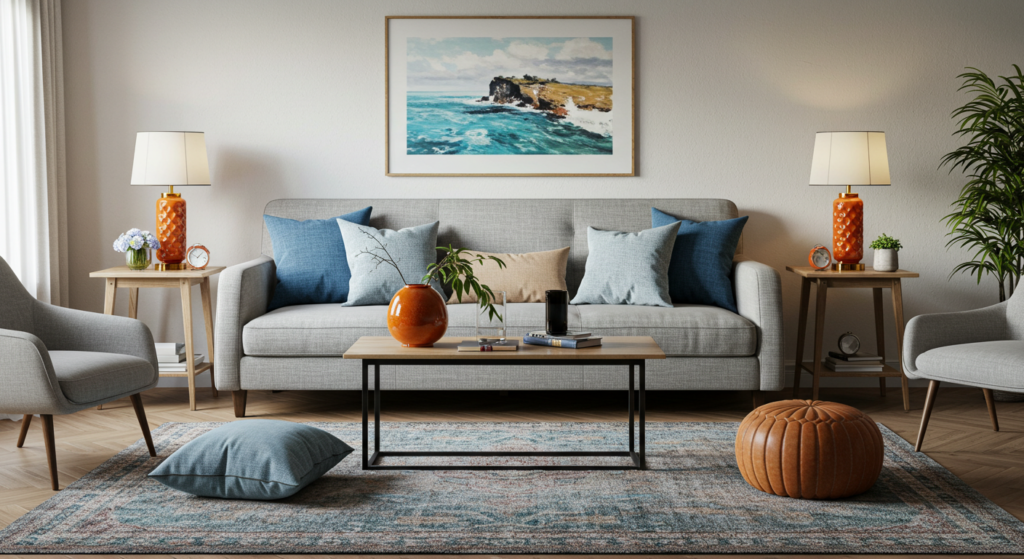
Subtle Earth Elements
Earth-related shades like sandy tan, clay brown, or stony gray can ground a room. You don’t need an obvious southwestern theme, though. A light brown rug or a polished stone accent piece might do the job. Earthy tones often lend stability in Feng Shui terms. If you aim for a calm family room, think of introducing a few scattered stone objects or even a rough ceramic lamp base. That helps reinforce a feeling of solidity.
Soft Water Influences
Water suggests depth, fluidity, and motion in Feng Shui. You can hint at water with navy throw pillows, a subtle turquoise accent wall, or a glass-top coffee table. Think gentle waves, not overwhelming blues everywhere. One or two watery elements can calm an otherwise busy space. If your room has a loud pattern on the couch, sprinkling in a watery accent might balance it.
Introducing Fire Tones
Some rooms crave a bit of liveliness. Fire colors include reds, oranges, and hints of bright yellow. This doesn’t mean painting your walls a flaming scarlet. A small burst of red in a decorative vase or a bright orange cushion can spark energy. If you already use subdued tones throughout, a dramatic fire accent might give your space a lively lift. Test small items first, then scale up if you like the result.
Complementary Pairs That Enhance Feng Shui
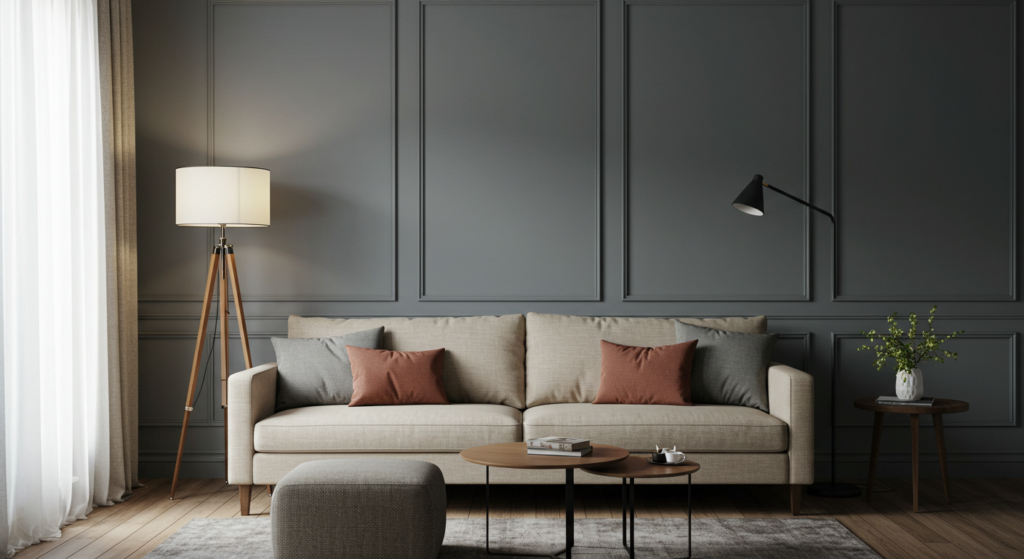
Cool and Warm Blends
Mixing cool and warm shades can yield interesting effects. A charcoal wall pairs well with copper light fixtures, for example. You can also combine a cool green sofa with warm wooden floors. Check how your lighting interacts with these choices. Warm lighting can soften cooler tones, and cool lighting can tone down overly warm walls. The dance between temperatures keeps a space from feeling stuck.
Tints and Shades in Harmony
Tints are lighter versions of a base color, while shades are deeper versions. Pair them thoughtfully. If your living room has a pale green wall, choose a deeper green throw blanket or an earthy green area rug. This technique adds dimension and organizes your color scheme. You’ll see a sense of unity emerge, which can help your arrangement flow.
Contrasting Accents for Pop
Sometimes you want strong contrast. This can be done with a small accent like a bright painting against a neutral wall, or a patterned cushion on a plain couch. High-contrast pairings, like black and white or navy and cream, attract immediate attention. They can energize a bland spot. If your main space is all neutrals, a simple black-and-gold lamp could serve as a striking feature without dominating the entire room.
Color in Small Spaces
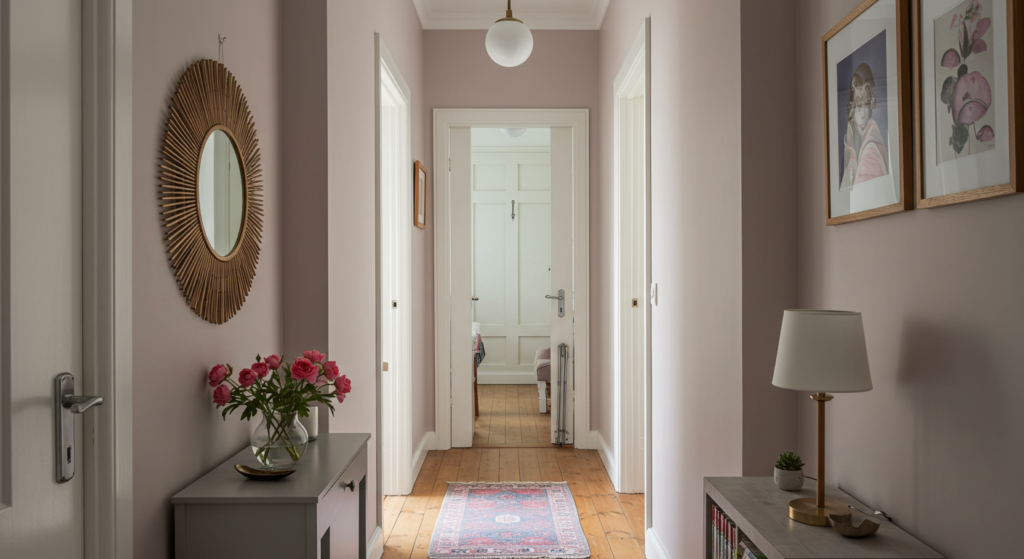
Tricks to Expand a Tiny Hallway
Ever felt trapped in a narrow corridor? Lighter hues can help your hallway seem more open. Soft pastel or off-white walls let you see the end of the hallway faster, which suggests extra distance. Reflective surfaces can also push boundaries visually. A thin mirror on one side can bounce light around. Keep the floor color neutral or slightly darker to anchor the space. This way, the walls appear taller and more inviting.
Making a Small Bathroom Feel Luxurious
Consider glossy tiles in light tones. A small bathroom doesn’t need to be dull. Add a hint of elegance with a metallic fixture, such as a brushed brass faucet. Contrast that with a crisp white wall or a pale seafoam accent. This interplay suggests a spa-like ambiance. Add plush white towels and a smartly placed shelf, and you’ll craft a posh getaway even in a tight space.
Tones for Cozy Nooks
Alcoves or reading corners benefit from warmth. Soft browns, gentle burgundies, or an olive tone might create an intimate vibe. If you don’t want fully dark walls, consider painting just the nook area in a deeper color. The rest of the room can stay light, letting your little corner pop. Add a comfortable chair with layered textures, like a knit throw, to increase the cozy feeling.
Brightening Large Rooms Without Overpowering
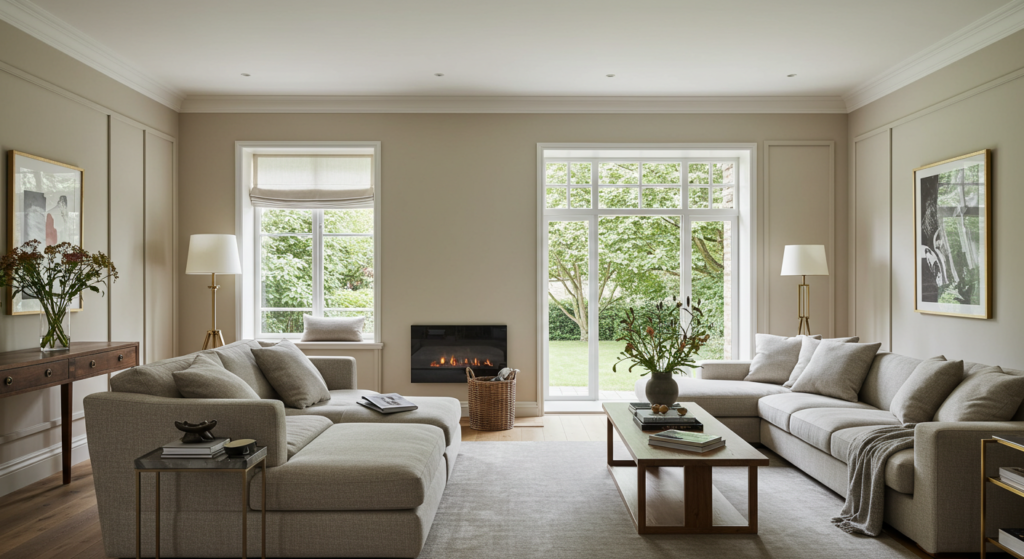
Splitting Big Rooms with Color Zones
Big living areas can feel empty if they’re a single shade. Divide your room into color zones. Maybe the dining area has warm taupe walls, while the sitting area leans toward a soft green. Keep an element tying them together, such as matching trim or uniform flooring. That separation can define each zone’s function while preserving a cohesive look.
Ceiling Colors for High Spaces
Vaulted ceilings can feel impressive but also chilly. Painting a ceiling in a slightly warmer shade than the walls can lower the perceived height, creating a friendlier scale. If you have beams or crown molding, consider painting them a crisp, complementary color to highlight the architectural details. This tactic can bring interest upward, directing attention to the unique shape of your space.
Avoiding Over-Saturation
Large rooms are perfect canvases for color, but you can overdo it. Stick to two or three main colors, then use small accents throughout. Too many strong hues might create chaos. Let your biggest pieces, like your sofa or rug, anchor the palette. Then introduce lighter or darker tones in lamps, wall art, or side tables. This approach keeps the design balanced without overwhelming the senses.
Entryways and Foyers
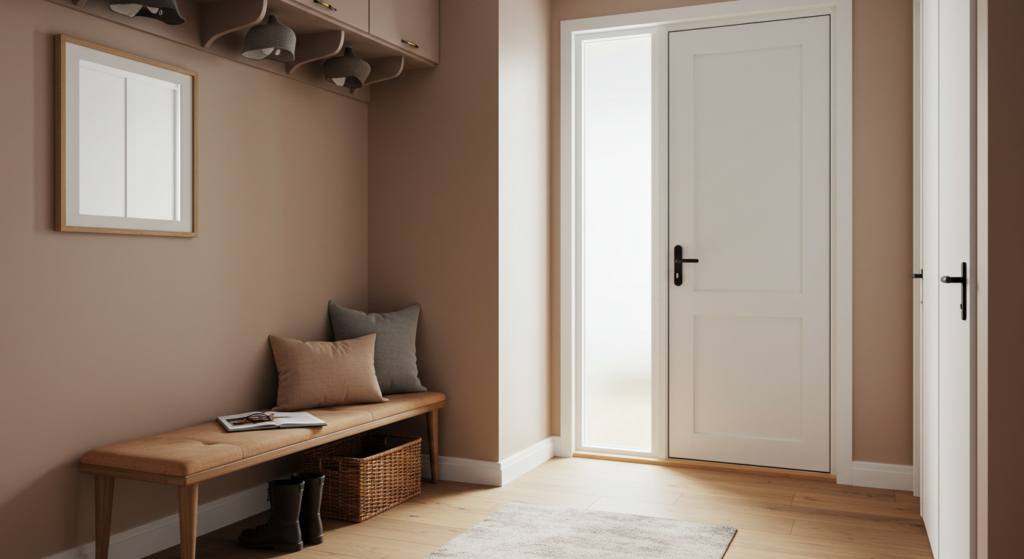
Welcoming Tones and Decorations
The entryway is your home’s handshake. Choose a color that invites guests, like a soft but cheerful pastel. Alternatively, keep walls neutral and feature a standout console table or a mirror frame in a bolder hue. Place a small decorative bowl on the console for keys, and consider a simple runner rug that anchors the space. This approach blends form and function, setting an organized tone.
Smooth Transitions from Outdoors
If your front door is a bright color, carry a whisper of that hue inside. If it’s a red door, place a small red accent in the foyer, like a ceramic piece or a cushion on a bench. This subtle connection ties the inside and outside. It makes visitors feel the design is intentional, echoing Feng Shui’s principle of cohesive flow.
Storage and Clarity
Clutter in the foyer can stifle energy, according to Feng Shui ideas. Use a stylish coat rack or built-in storage bench. A tidy entryway feels better for everyone. Keep shoes stored away or in a designated area so you don’t trip over them. Choose storage units that match or complement your color scheme. This ensures a practical approach without sacrificing style.
Living Room Color Layers

Combining Textiles and Paint
A living room can handle multiple layers of color. Start with walls in a warm neutral, then layer a textured rug in a deeper hue. Scatter some cushions in a lighter tint. The interplay of paint, textiles, and accent pieces can make the room feel complete. If you rely solely on wall color, the space might look flat. Adding variety in rugs, pillows, and throws infuses dimension.
Decor with a Purpose
Focus on items that have meaning or function. If you have a large painting, choose a wall color that supports it. Let the painting guide your accent choices. If you have a vintage coffee table, let its tone direct your fabric colors. This synergy weaves everything together, boosting harmony. Rather than random pieces, each item plays a distinct part in your color story.
Linking Light Fixtures to Color
Light fixtures come in many finishes: brass, chrome, wood, or painted metal. Use them to tie in or contrast with your palette. If your walls and furniture lean warm, a chrome lamp could provide a touch of modern brightness. If your scheme is cool, a copper or wood pendant might add a bit of depth. This subtle interplay can help unify the room.
Kitchen and Dining Area
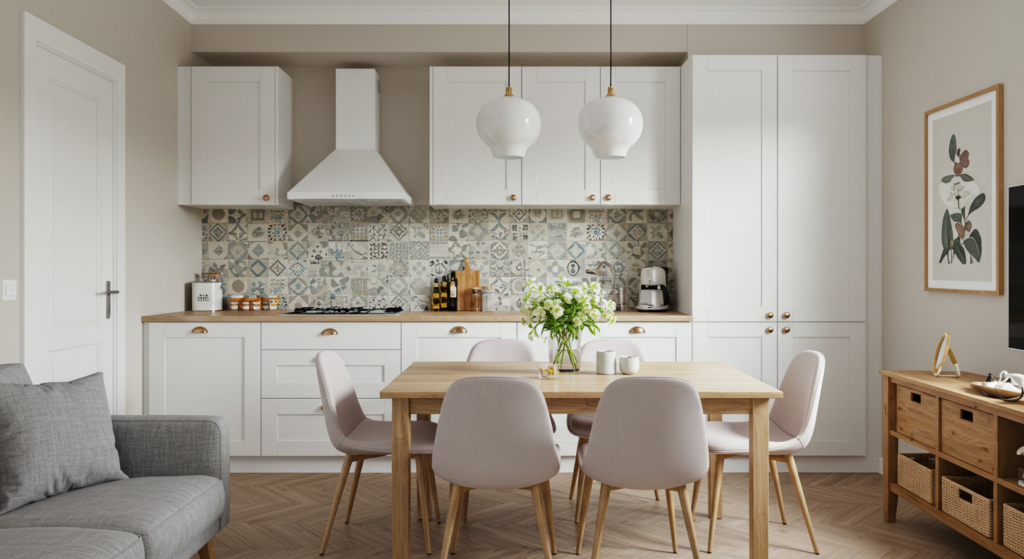
Balanced Hues for Cooking
The kitchen is often the heartbeat of a home. If the space is small, consider a crisp white or soft pastel for cabinets. This promotes a bright environment that lets you focus on cooking tasks. If you have more room, experiment with a bold cabinet color, like a gentle sage or navy. Pair it with neutral countertops for a balanced look.
Accent Walls or Backsplashes
Instead of painting all walls, pick one accent area. A patterned backsplash can bring color without overwhelming the room. Tiles with geometric prints can spice up an otherwise simple kitchen. If you have open shelving, line the back wall with a contrasting shade. This type of accent draws the eye without taking over your entire design.
Dining Table Coordination
The dining area calls for an inviting atmosphere. If your table is wooden, a neutral or pastel wall color can highlight the natural warmth of the wood. Chair cushions can echo a specific accent color, such as a soft teal or maroon. That small detail can make the dining spot feel pulled together. If you use a table runner, pick one that ties into your main color scheme.
Bedroom Sanctuaries
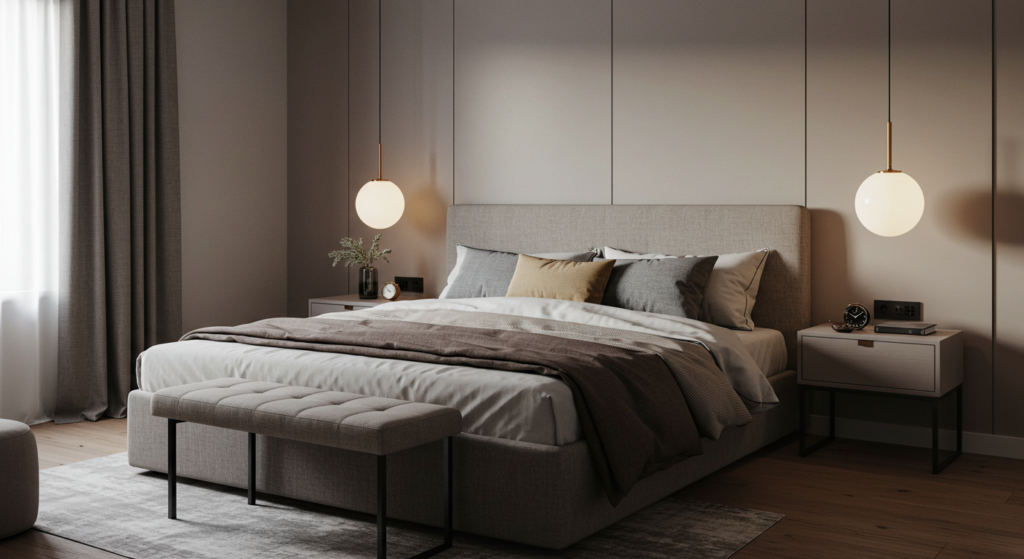
Calming Wall Choices
Bedrooms should soothe and foster rest. Lighter neutral tones, pale blues, or gentle greens often help. If you prefer richer tones, consider one accent wall behind the headboard. Pair that with lighter bedding for a refined contrast. Soft lighting from table lamps or wall sconces can complete the restful vibe. A scattered approach to color can disturb sleep, so keep it tidy and intentional.
Fabric Selections
Bedding is crucial for the bedroom’s overall look. Choose sheets and blankets that coordinate or gently contrast with your wall color. Patterns can be fun, but don’t clash them. If your walls have a pattern, keep bedding simpler. If walls are plain, patterned bedding can add life. Add smaller pillows or a throw in another complementary shade to hint at layers of comfort.
Feng Shui Bed Placement
Position your bed so you can see the main entrance without blocking movement. If that’s not possible, a mirror or reflective surface can help you keep an eye on the door. Choose a headboard color that aligns with your overall palette. This arrangement can create a sense of security and openness, two elements that support a peaceful environment.
Home Office Optimization

Energizing Yet Focused
For a home office, you might want a bit of pep. That doesn’t mean screaming neon. Instead, opt for a warm neutral with one vibrant accent. A mustard-yellow chair or a desk lamp in bright teal can energize you. The background should remain calm enough to reduce distractions. By balancing energy and focus, you maintain productivity and comfort.
Clever Storage Solutions
Disorganized files can throw off your workspace. If possible, incorporate shelves or cabinets with a tone that blends in. This ensures they don’t visually clutter the area. For example, white shelving on a white wall seems to float away, making the room appear more open. You can add a small accent color on the shelf edges or handles if you like a pop of flair.
Lighting and Color
If you’re staring at a computer, glare is a real issue. Choose wall paint that doesn’t reflect too much light. A soft matte finish might help. Use task lighting for your desk, and keep overhead lighting gentle. Harsh lights can tire your eyes, affecting your work. By blending your chosen wall color with suitable lamps, you’ll maintain focus without straining your vision.
Children’s Rooms and Guest Rooms

Flexible Palettes for Kids
Children’s preferences shift quickly. Pick a simple base color or neutral walls, then bring in bright bedding, posters, or rugs. That way, you can update the room over time without repainting everything. Add a chalkboard wall or removable stickers for fun. This approach lets you adjust to changing tastes while keeping a cohesive design.
Gentle Touch for Guest Areas
Guest rooms don’t need to be bland. A warm beige or pale green wall can feel inviting. Provide a plush throw and a few cushions in a slightly brighter color. This small step conveys thoughtfulness. Leave some space for the guest’s belongings by not crowding the room with excessive furniture. This arrangement encourages relaxation and a sense of welcome.
Strategic Storage and Flow
In shared or multi-purpose spaces, functional storage is key. Closets, under-bed drawers, or floating shelves free up floor space. Choose storage items in the same color family as the walls to reduce visual clutter. That way, the room stays calm and welcoming. Any accent colors, like fun storage bins or baskets, can coordinate with the primary scheme.
Outdoor and Indoor Connection
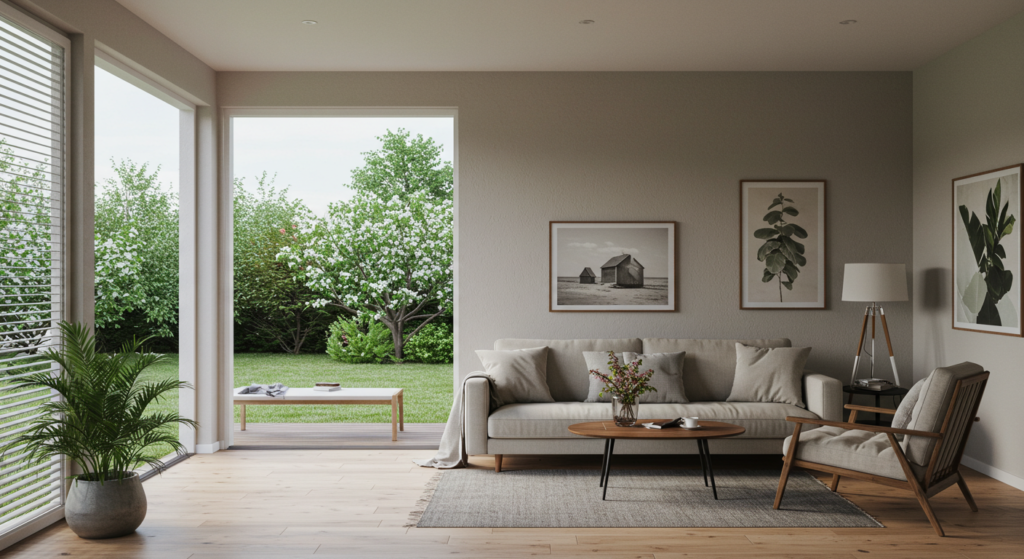
Patio Extensions
If you have a patio, let your interior color scheme connect to it. If your living room walls are light gray, paint the patio furniture or railings a complementing shade. This creates a flow between indoors and outdoors. Potted plants can stand on the threshold, linking the natural greenery with your interior color story. It feels cohesive rather than abrupt.
Sliding Doors and Continuity
Large sliding doors or French doors can serve as a visual bridge. Keep frames in a neutral color that works well with both your interior walls and your exterior walls. If the view outside features lush green, consider subtle touches of green inside. A vase or small rug might bring the outdoors in, unifying the overall look.
Materials That Compliment
Wooden decks, stone pathways, or tile floors often come in their own natural colors. If your deck has a reddish tint, picking interior accents that echo this tone ensures a smooth flow. You don’t need to match the exact shade, though. A few decorative objects in a related hue can help your home feel joined to the exterior, in line with Feng Shui’s idea of harmony.
Blending Different Design Styles

Modern Meets Rustic
If you like modern furniture but also have rustic wooden beams, color can help bridge the gap. Pair sleek, cool-toned furniture with an accent wall that resonates with the wood’s warmth. Or choose accessories in natural textures, like woven baskets or linen pillows, which match the neutral modern vibe. The key is to ensure that both styles talk to each other through a unifying color story.
Classic and Contemporary Touches
Some homes have classic architectural details but modern appliances or fixtures. If the walls feature ornate molding, choose a paint color that highlights those details. It might be a subtle pastel or a clean white, which sets up a crisp backdrop. Then, let your contemporary furniture add color contrast, such as bold chairs or sculptural lamps. This interplay balances tradition and innovation.
Global Inspiration
Feng Shui isn’t the only global design approach out there. If you have Moroccan tiles or Scandinavian furniture, you can still incorporate Feng Shui principles of balance. Draw from the colors in those global items and carry them into the rest of the space. If you have a bright woven tapestry, echo a tint from it in a smaller piece somewhere else. This technique ensures unity rather than disarray.
Common Color Pitfalls and How to Avoid Them
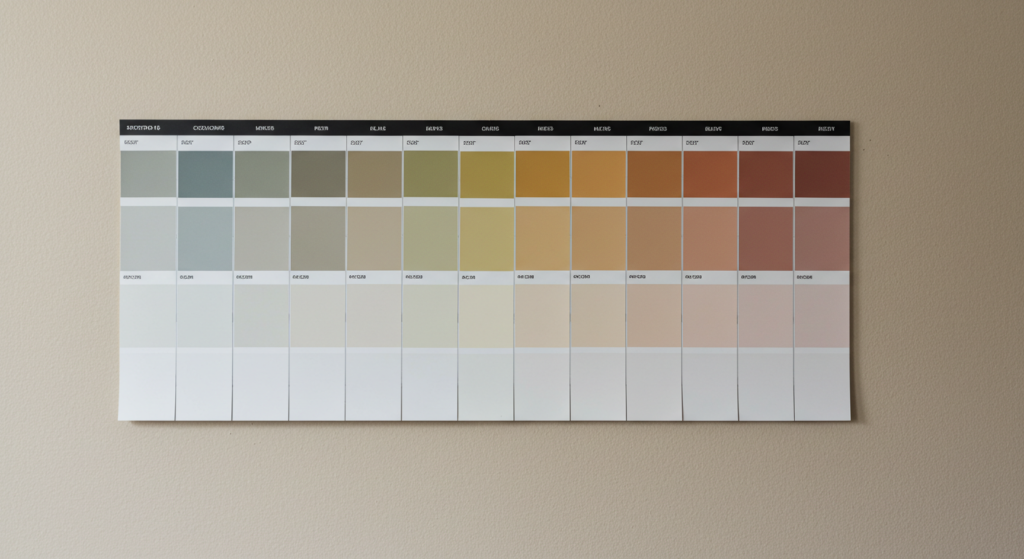
Overcomplicating the Palette
Some individuals grab too many samples, end up confused, and pick mismatched tones. Limit your palette to a few main colors and a couple of accents. If you’re unsure, start with neutrals. Then add a bold or pastel highlight. By narrowing your choices, you reduce stress and keep the design cohesive.
Failing to Test Samples
Paint can change based on your lighting. Always test a small patch on your wall before painting everything. Wait for it to dry, then check how it looks throughout the day. Does it turn oddly yellow under your lamp? Does it become too dark at night? Adjust accordingly. This step saves time, money, and frustration.
Neglecting Trim and Details
Mismatched trim can ruin a polished look. If your trim is bright white, make sure the wall color pairs well with it. If your trim is off-white or stained wood, consider how that might alter the perception of wall color. Don’t forget smaller details like doorknobs, window frames, and baseboards. These elements can either vanish into the background or stand out as unique features.
Accent Decor: Pillows, Rugs, and Artwork

Pillows That Pop
Throw pillows are easy to switch and can introduce fun color combinations. If your couch is neutral, a row of bright pillows might add new energy. In the bedroom, a few accent pillows can tie the bedding in with the wall color. Keep an eye on patterns, so they don’t clash. Bold geometry or vibrant florals can be striking if balanced with simpler companion pieces.
Rugs and Floor Focus
A rug draws attention to the floor. For large areas, a bigger rug can define seating zones or dining spots. If the rest of the room is neutral, a patterned rug can become a statement. If the room already has strong walls, a simpler rug might be best. Consider a rug’s texture: plush can add softness, while a woven style can provide an organic, grounded element.
Artwork as a Color Connector
Use artwork to tie disparate elements together. If you have a set of red accessories but your sofa is gray, a piece of art that combines red and gray can merge the palette. Hang it at eye level for maximum effect. This trick can also balance a space visually. One large piece or a gallery wall with a shared color theme can complete your Feng Shui-based arrangement.
Practical Tools and Final Touches
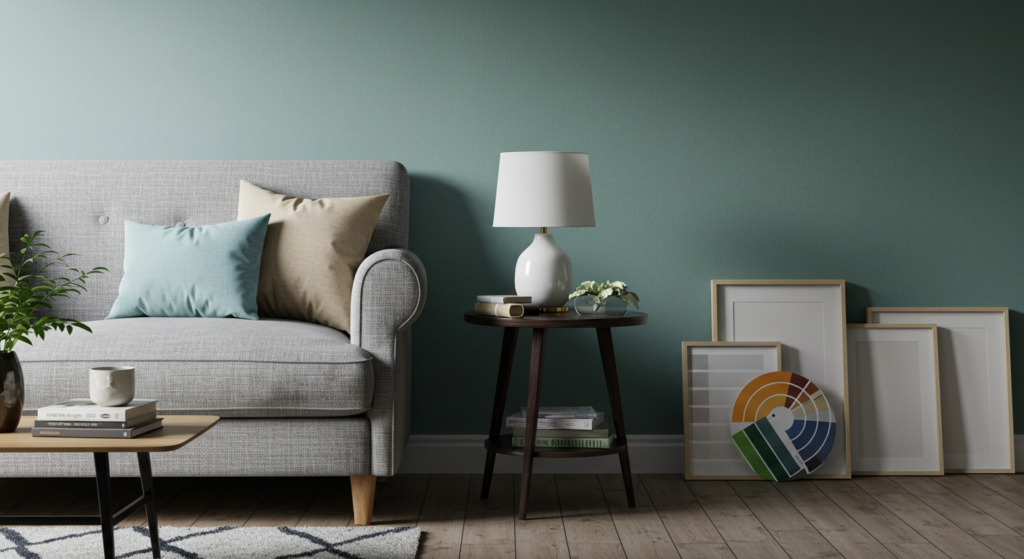
Using Color Swatches
Bring home color swatches from the paint store. Tape them on various walls and observe them under different lights. Move them around to see how they shift near windows, doors, and corners. This method gives you a low-cost, low-risk way to experiment before you commit.
Furniture Placement for Flow
After choosing colors, arrange furniture so people can walk around easily. Leave space between major pieces. Avoid pushing everything against the walls unless the room is truly small. In Feng Shui terms, clear circulation allows for smoother energy movement. In everyday terms, it prevents a cramped feel. If something blocks a doorway, that might disrupt the design and the functional use of the room.
Final Checks
Before calling your project done, step back and examine each area. Does the color look even under all light sources? Do the accent pieces align with your main color theme? Is there enough free space for comfortable movement? Making these final tweaks can turn a decent makeover into a standout success.
Conclusion
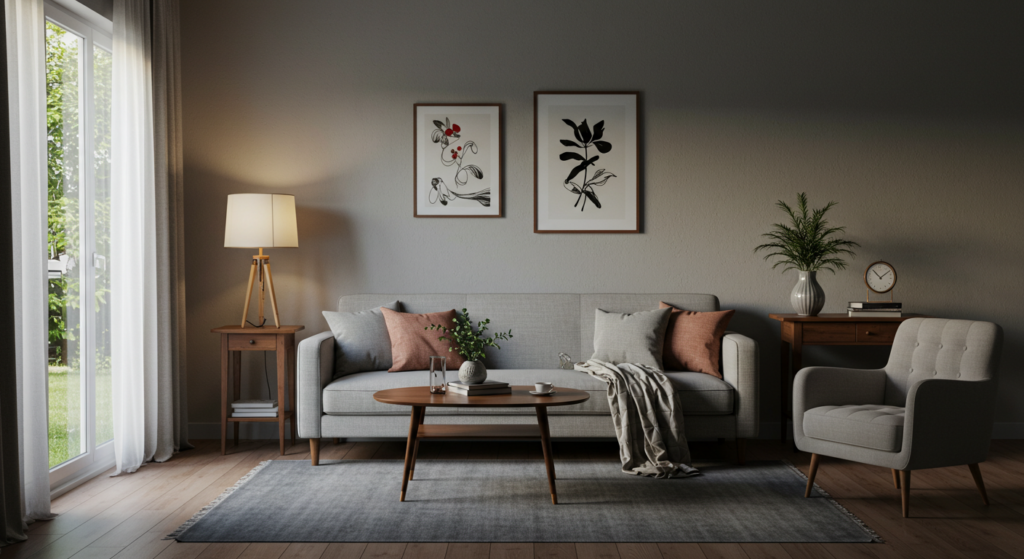
Feng Shui offers guidance on how we use color and space to encourage balance. The goal isn’t to memorize complicated rules but rather to sense how each element interacts.
By combining thoughtful color selection with smart furniture placement, you create rooms that feel welcoming and unified. Whether you prefer understated neutrals or more vibrant tones, the key is consistency and purpose.
Don’t shy away from experimenting. A small splash of teal on a door, a subtle accent wall, or bold cushions can transform a tired room into a warm retreat.
As you apply these ideas, keep in mind the broader picture. Each corner of your home should feel like it belongs to the same story, even if every room has its own distinct flavor.
Harmony doesn’t come from a single color choice, but from how you orchestrate paint, furniture, and accents in a pleasing arrangement.
That’s the essence of good Feng Shui. Take a step forward, pick some color swatches, and let balance guide you.
Summary Table for Quick Reference
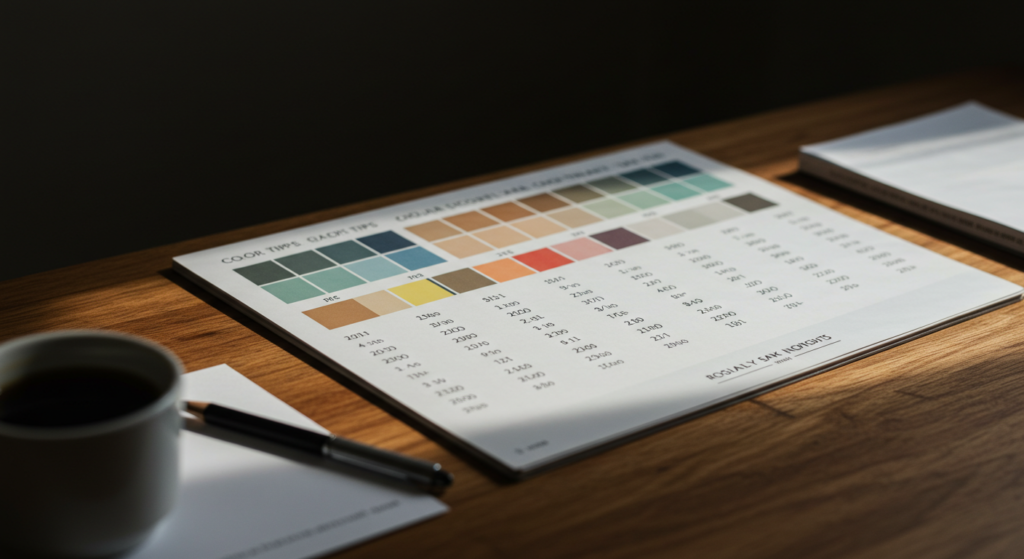
| Aspect | Quick Tip | Example |
|---|---|---|
| Entryway | Keep it welcoming with soft hues or a bold accent console | Neutral walls, bright door frame, or statement console piece |
| Living Room | Layer color through textiles and paint | Neutral walls, bold rug, throw pillows in a complementing hue |
| Kitchen | Choose bright or neutral cabinets, add a fun backsplash | White cabinets, colorful tile backsplash, matching dining chairs |
| Bedroom | Calming wall color and accent pillows | One feature wall in muted blue, light bedding, small table lamps |
| Small Spaces | Light colors, mirrors, and minimal clutter | Pastel corridor, single mirror on the wall, neat storage baskets |
| Large Rooms | Break into zones with color or furniture arrangement | Section off a living-dining area with two complementary wall shades |
| Home Office | Balanced neutral with an energizing pop | White walls, bright teal lamp or mustard-yellow chair |
| Children’s Room | Simple walls, flexible accents that can be replaced easily | Soft gray walls, bright removable stickers, fun rug |
| Guest Room | Warm neutrals, subtle color to welcome visitors | Beige walls, soft pastel pillows, small reading chair |
| Outdoor-Indoor Link | Use similar shades or accents to unify spaces | Gray living room walls, matching gray patio cushions |
| Blending Styles | Use color to merge modern and rustic or classic elements | Wood beams + modern furniture + color accent in pillows or art |
| Avoiding Pitfalls | Keep palettes limited, test paint swatches | 2-3 main colors, paint small area to observe color under lighting |
| Accent Decor | Pillows, rugs, artwork tie everything together | Neutral sofa, colorful pillows, art print that merges both shades |
| Practical Final Touches | Arrange furniture for ease, confirm color harmony | Check lighting, test walking flow, add final accent pieces |
FAQ

Q: Do I need to follow strict Feng Shui rules to create balanced spaces?
No. Feng Shui is about flow and harmony. You can still achieve a balanced home by selecting colors that work together and placing furniture in ways that feel natural. Use Feng Shui concepts as a guide, not an unbreakable set of laws.
Q: How do I pick a color if my room has odd lighting or strange angles?
Test small paint samples first. Apply swatches where the light shifts. Check them at different times. Angles can cast shadows that affect how a color appears. If you spot weird undertones, try a lighter or darker version of that same hue.
Q: Is it possible to incorporate bold colors in small rooms without making them feel cramped?
Yes. Pick one or two key accents. A bold color on one wall or in a few accessories can liven up a small space. Keep the rest of the room neutral. Mirrors and good lighting also help maintain an open feeling.
Q: Should every room have the same color palette for a unified look?
It’s optional, but helpful if the rooms open into each other. If you want variety, choose a unifying theme like a common accent color or a neutral that runs throughout. This makes each room distinct but still connected.
Q: Can I try multiple Feng Shui approaches at once?
You can blend ideas, but don’t overload your space with too many motifs. Pick the essentials that resonate with you and complement your lifestyle. Balance and clarity are key.
Q: What if I want to freshen my home decor without repainting everything?
Change accessories such as pillows, rugs, curtains, or small furniture pieces. These quick updates can shift the room’s entire feel. Also, rearranging furniture or adding a statement piece can make a big difference.
Q: Are there any must-follow color rules for Feng Shui?
Feng Shui suggests certain colors align with specific energies, but you don’t have to be rigid. Think about how your chosen colors interact with your space and how they enhance comfort and flow. Adapt the guidelines to suit your taste.
Q: Can I paint trims and doors in contrasting colors?
Yes, if you want a bold look. A darker door on lighter walls can stand out and create a stylish statement. Make sure the trim color complements your wall shade. This step highlights architectural details and adds character.
Q: How do I hide wall blemishes in older homes without using extreme colors?
Look for slightly matte or eggshell finishes in mid-range neutrals. These finishes hide imperfections better than high-gloss. You can also place artwork or shelves strategically to distract from minor flaws.
Q: Is neutral always safer for resale value?
Generally, yes. Neutral walls make it easier for potential buyers to envision their own decor. But that doesn’t mean your home must be bland. A well-chosen accent wall or subtle color accent can still appeal to many buyers.
Q: How do I handle a space that doubles as a living and working area?
Zone the space with color or rugs. Keep the workspace a bit more energetic, and the relaxation side calmer. A unifying element like consistent trim or a shared accent color keeps it cohesive while defining separate functions.
Q: Can Feng Shui and minimalism coexist?
Absolutely. Feng Shui can blend well with minimalism by emphasizing open space and unobstructed flow. Focus on a few well-chosen items and colors. You’ll create balance and clarity without clutter.
Q: Is it possible to decorate with color while staying under budget?
Yes. You can paint a statement piece of furniture instead of all the walls. Or add accent pillows, curtains, and DIY artwork. Shop for clearance fabrics or gently used furniture, and transform them with paint or updated hardware.
Q: Should I consult a professional interior designer?
That depends on your confidence and budget. Many homeowners decorate successfully by researching and experimenting. If you feel stuck or have a complex floor plan, a designer can offer targeted advice and may save you time.
Feel free to explore these color ideas and apply the tips that resonate with your style. Whether you want a subtle change or a vivid transformation, a harmonious home is within reach when you blend thoughtful choices with the guiding principles of Feng Shui. Enjoy bringing balance into your space!

Brenda Tillman is a color maestro who brings artistic brilliance to every piece she crafts. Passionate about imaginative expressions, she illuminates the world of fashion with her expert guidance on shades and combinations. Beyond her writings, Brenda is a culinary enthusiast and a global traveler, infusing her work with diverse insights. Her unique touch transforms simple color choices into art.
Reviewed By: Joanna Perez and Anna West
Edited By: Lenny Terra
Fact Checked By: Matthew Mansour
Photos Taken or Curated By: Matthew Mansour
